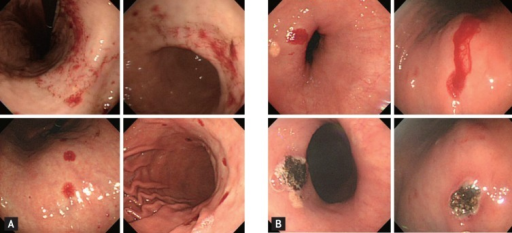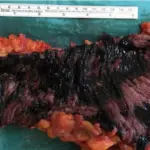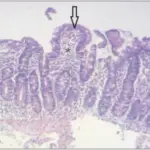Angiodysplasia is an abnormal, tortuous, dilated small blood vessel in the mucosal and submucosal layers of the GI tract.
What is the Pathology of Angiodysplasia?
The pathology of angiodysplasia is:
-Etiology: The cause of angiodysplasia is unknown. But normal spasms occurring in the GI tract may be responsible for the enlargement of blood vessels. This enlargement leads to the development of small pathways between a vein and an artery, which can leak with blood.
-Genes involved: mutations in ACVRL1; ALK1, SMAD4 genes.
-Pathogenesis: The sequence of events that lead to angiodysplasia are: age and strain on the bowel wall. It is a degenerative lesion, acquired, probably resulting from chronic and intermittent contraction of the colon that is obstructing the venous drainage of the mucosa.
-Histology: The histology associated with angiodysplasia shows vascular lesion of the gastrointestinal tract.
How does Angiodysplasia Present?
Patients with angiodysplasia typically in all genders older than 60 years. The symptoms, features, and clinical findings associated with angiodysplasia include: shortness of breath, tiredness, weakness, pale skin, lightheadedness, dizziness, fast heartbeat.
How is Angiodysplasia Diagnosed?
Angiodysplasia is diagnosed by endoscopy, either colonoscopy or esophagogastroduodenoscopy EGD.
How is Angiodysplasia Treated?
Angiodysplasia is treated by surgical resection.
What is the Prognosis of Angiodysplasia?
The prognosis of angiodysplasia is fair.



